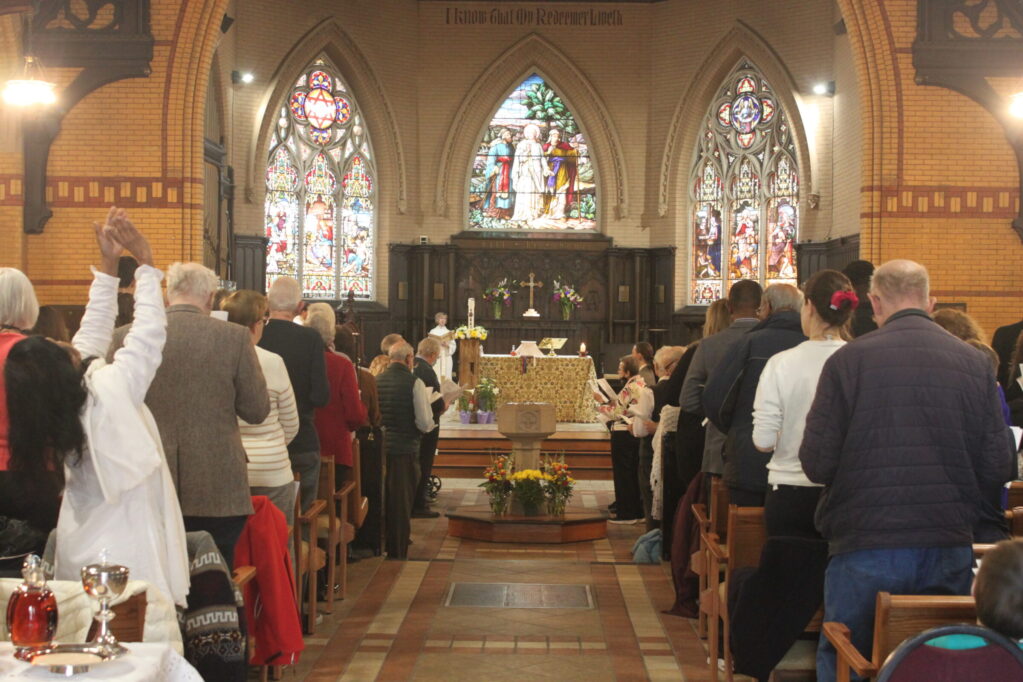What kind of a congregation is the Church of the Redeemer? There are lots of ways to answer this question. One that has been employed recently in a meeting of the Advisory Board is something called Church Size Typology. Developed by the Alban Institute, an organization of consultants working with mainline denominations in Canada and the US, the theory describes the characteristics of congregations – parishes – based on the average Sunday attendance (ASA).
There is a short summary of the ‘types’ – Family, Pastoral, Program, Resource below. What ‘type’ of parish was Redeemer when you arrived? What is important about this theory and why are we talking about it at Redeemer?
One reason is that since the 1980s, or within living memory of some of our members, we have been at each of the stages. We have negotiated the transitions. Sometimes it has been a bit wobbly. Now we are at another transition moving between the Program Sized Parish toward the Resource Sized Parish.
These transition times are critical. (Some will remember such times here at Redeemer.) Congregations find it challenging to make the changes necessary to grow in a healthy and vibrant manner. There are many reasons why this is an awkward situation. There is often an inertia, a comfort for members that thwarts the efforts to welcome and integrate new members. There may not be the staffing support (clergy and lay roles) to ensure success; there may be a sense of loss of ‘the way things were’ (ready access to clergy, ability to initiate projects quickly …).
Also, members may default to the ways of the community that originally attracted them. However, that same attraction brings new people! In short, this means change! How does the community sustain what is most important to it and also include the new energy, ideas, gifts and skills that additional people bring?
The authors of this Size Typology theory observe that the congregation that doesn’t adapt its structure and leadership approach to reflect the size congregation it wants to become has no hope of sustainability. And the congregation that has not been appropriately structured to manage its complexity will eventually stagnate or decline.
Understanding the dynamics can highlight the opportunities and risks. How can we harness the benefits and be aware and avoid the difficulties so that Redeemer continues to flourish as a beacon of faith and justice at the corner of Avenue Road and Bloor Street?
SIZE TYPOLOGY SUMMARY
Family Sized Parish, (ASA of up to 50 members): The ministry in this sized church often revolves around one or two key families. Power and authority rests with a matriarch or patriarch individual or family. Change happens through these members. Disagreements are like family feuds. The role of the clergy is more of a chaplain for the congregation.
Pastoral Sized Parish, (ASA between 50-150): The ministry in this sized parish is clergy centered with power and authority shared with a few other leaders. Ministry is largely developed, led, or guided by the clergy. People’s loyalty and interest in the church will largely center on their feelings about the priest. If given the choice between good preaching or pastoral visits with parishioners, this sized parish prefers activities that build relationships. Arguments will be about the clergy.
Program Sized Parish, (ASA between 150-350): Ministry within a parish of this size largely happens through diverse programming to suit the interests or ages of the members. The Program Sized Parish depends on shared leadership; each member actively engaging and taking part in ministry. Vibrancy is intrinsically tied to the faith development of members. As members grow in their faith, the community grows and thrives. New members get incorporated through groups. While the clergy remain the spiritual head and leader of the community, there is a shift to building up lay leaders who are able to mentor others in the faith. Power and authority resides in committees. Change gets driven by lay leaders and the clergy role shifts to administration. Disagreements are over resources and priorities.
Resource or Corporate Sized Parish (ASA 350 or more): With increased resources – people, leaders, funds – the Resource Sized Parish is complex and multi-dimensional. There are multiple staff roles and ministries (musicians, clergy with specific ministry area, lay program staff). A lot of work goes into making Sunday worship a rich experience, followed up by opportunities to serve and support mission and ministry. This sized parish is distinguished from the Program Sized Parish by its complexity and diversity. Governing boards formally control the parish’s life and future. Laity lead on many levels and the Resource Sized Parish provides many opportunities to exercise ministry and influence. Key to success is the multiple staff and its ability to manage the diversity of its ministries in a collegial manner. The primary role for the clergy is to put forth the vision, often through dynamic preaching, and oversee the staff who supervise the mission and ministry.
